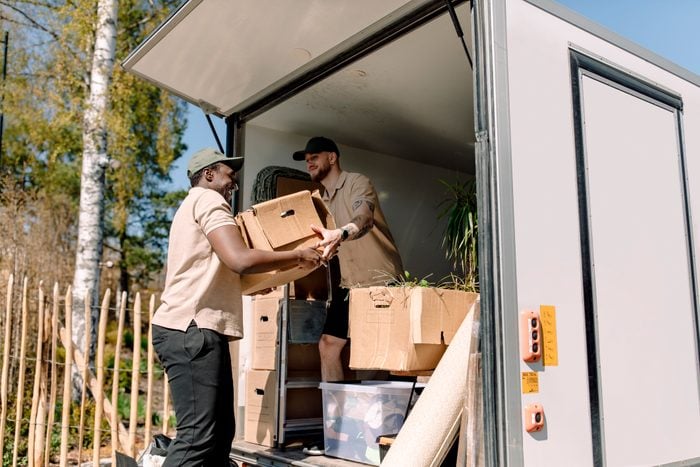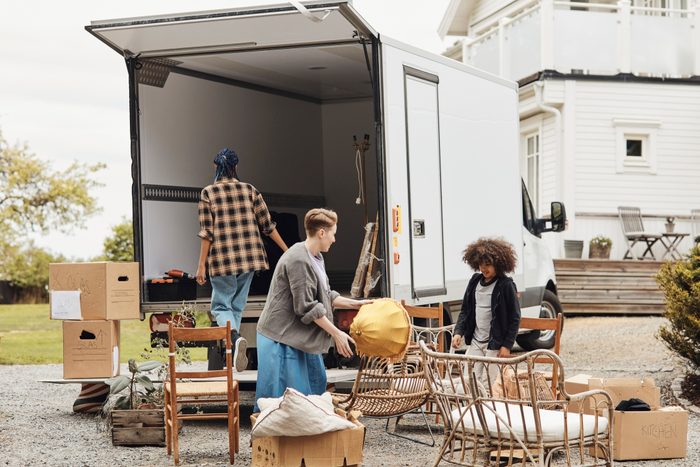Planning a long-distance move? Do your research, and be on the lookout for red flags. Here's what you need to know.
What To Know About Long-Distance Moving

How To Plan for a Long-Distance Move
Planning can make or break your move. As soon as you know you’re moving, start formulating a plan so that you won’t be scrambling on moving day.
Do you want to hire a moving company or DIY? What’s your budget? Will you need to ship your car? Ask questions and jot down the answers to make informed decisions.
If you’re worried you won’t think of everything, online moving resources can help. The Federal Motor Carrier Safety Administration (FMCSA) website helps you find a good moving company and avoid fraud. Moving.com offers an extensive checklist, mapping out everything from having a garage sale to paying unpaid parking tickets.

How To Pack for a Long-Distance Move
Don’t wait. Packing always takes longer than you think.
Start by decluttering and packing up things you won’t need: your mom’s china, opposite-season clothes, garage items. Label boxes on the side, not the top, so you can read what’s in them when they’re stacked.
Begin packing the rest of your stuff, minus essentials, at least two weeks before your move date. Set aside things you’ll need as soon as you get to your new home — bedding, toiletries, cleaning supplies, etc. — and pack them in separate boxes. United Van Lines has a “First Night Box” checklist with suggestions.
If you hired a moving company, bring these essential items with you, as well as any valuables and important papers. Let the movers do the rest (here’s how much you should tip your movers). If you’re moving yourself, here are the best ways to pack for a move.

How Much Does a Long-Distance Moving Service Cost?
Moving isn’t cheap. According to Moving.com, the average cost of a long-distance move is nearly $5,000. Costs vary widely based on the size of your home, the weight of your things and how far away you’re moving. Full-service add-ons like packing and unpacking, storage or car-hauling push the cost higher.
The cost to move a studio apartment or one-bedroom house 1,000 miles averages $2,233, according to Moving.com. Moving a two- to three-bedroom house the same distance averages $4,552. For a four- to five-bedroom home, you’re looking at $8,190.
If you’re not on a deadline, Atlas Van Lines says you can save money if you move in November or December. Summer is the busiest season to move, and high summer prices reflect that. Schedule a move mid-month if you can. You’ll miss the end-of-lease move-outs that usually happen at the beginning and end of each month.

How To Choose a Long-Distance Moving Company
With moving companies, one size doesn’t fit it all. If you’re a recent college graduate, your needs are different than a family of four. Take an inventory of your belongings and the services you need, then do some research:
- Ask for referrals from friends and family. The average person moves 11.7 times in their lifetime, so chances are someone you know can suggest a company — or warn about a bad one.
- Check company websites for deals. American Van Lines has special offers for moves between popular cities.
- Get three in-home or virtual written estimates.
- Ask about special equipment or training. If you have a grand piano, make sure the company you choose knows how to move it safely.
- Check the Better Business Bureau for company details.
- Ask if the company is a mover or a broker. Brokers don’t move your things; they sell your move to a carrier, who does the moving.

How To Minimize Your Risk
Moving requires trust. Unless you drive the moving truck yourself, you’re handing over all your belongings to someone you’ve never met. While most of the 35,000,000 Americans who move every year do so successfully, sometimes things go awry. Vetting your moving company reduces your risk. Here’s how:
- Verify the mover’s identity. They should have a valid license, a physical address and a working phone number.
- Check the FMCSA database for valid Department of Transportation registrations and any complaints filed against the mover.
- Know your rights. Interstate movers are required by law to give you two documents outlining your rights and responsibilities.
- Beware of extremely low estimates (get three for comparison), or estimates given without seeing your home (virtual tours are OK).
- Keep valuables like cash and jewelry with you.
- Don’t hand over a lot of cash up front. Reputable movers will never make you pay in advance.

